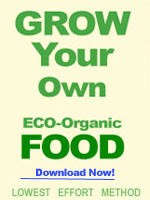Making The Switch To Healthier Foods For A Better Life
After reading news headlines about the effects of eating foods with preservatives and additives in them, many people today are searching for alternative ways of eating healthier so they’ll experience less chemical exposure. One of the easiest ways to do this is by eating natural unprocessed food. This can be done by choosing foods found in the outer aisles in grocery stores. Fresh fruits and vegetables fall into this category, along with many low-fat dairy products, lean meats and other proteins.
Eating food in its natural state is a good way to ensure better health. Fresh fruits and vegetables should ideally make up about five food servings a day. It’s smart to look for organic foods when they’re available, and to read labels on everything. Other types of food are best used in moderation.
[do_widget id=text-16]
Healthier Eating Without Additives
Good advice for following a healthier diet with fewer additives includes these tips:
- Cook at home, from scratch if possible, so you know exactly what is in your food
- Buy organic when possible because organic food ensures less exposure to harmful chemicals. It may not be 100 percent chemical free, but must be largely chemical free to be labeled organic. Additives cannot make up more than five percent of the total product, not including water or salt
- Reading labels is a great habit to get into so you can be aware of what is in food. If foods have ingredients you wouldn’t have in your own kitchen, it may be better to stay away from them, or use them sparingly
Convenience foods are convenient for a reason – they often have artificial flavors, colors and preservatives to keep them fresher longer, and to try to add to their appeal. The true effects of all these additives might not be seen until years down the road. It’s advisable to avoid foods containing things like high fructose corn syrup, MSG for flavor enhancement, and other sugar forms like dextrose, glucose, sorbitol, fructose and invert sugar.
Be Aware Of Where Food Comes From
 By reading labels, you’ll be more aware of where food is coming from. Organic and other natural foods will often state on labels where they come from. The types of farms and whether things like antibiotics and hormones were a part of food production make a difference in the overall healthy qualities of food.
By reading labels, you’ll be more aware of where food is coming from. Organic and other natural foods will often state on labels where they come from. The types of farms and whether things like antibiotics and hormones were a part of food production make a difference in the overall healthy qualities of food.
When buying fresh, lean meats and other proteins, it’s best to look for labels that say no hormones or antibiotics were used on farms. This way you’ll know that cattle and livestock probably lived in more natural, healthier conditions that were also not overly crowded. This type of environment usually leads to fewer livestock health issues.
Whole And Natural Organic Grains Are Best
Grains are a crucial part of any diet and special attention should be given to reading labels when choosing them. Look for organic grains, breads and baked goods, since these will be at least 95 percent organic. The way organic grains are grown is without pesticides or synthetic fertilizers, and the way they are milled and processed is usually a more natural way, without using chemical sprays.
It’s also good advice to look for grain based food staples like brown rice, whole wheat breads, whole oats, quinoa, bran flakes and whole wheat pasta. Most people develop a taste for healthier foods quickly and once that happens, they find it difficult to revert back to less healthy options.
Healthy Food Does Not Have To Be Expensive
 While the prices for healthier food options can be higher than those for processed alternatives, many people feel that the potential health benefits outweigh the extra price of healthier food options. Companies like Hampton Creek and other companies that are conscious about offering consumers healthier food options are also trying to make those foods more affordable and more widely available to everyone.
While the prices for healthier food options can be higher than those for processed alternatives, many people feel that the potential health benefits outweigh the extra price of healthier food options. Companies like Hampton Creek and other companies that are conscious about offering consumers healthier food options are also trying to make those foods more affordable and more widely available to everyone.
Today, many consumers can find healthy food options in their local grocery stores and in less expensive big box retailers that also sell groceries. It’s good to search for food that is manufactured and sold by companies that are conscientious about offering the healthiest foods possible, and that are trying to produce these foods in ways that also help the environment.
Other Essential Parts Of A Healthy Diet
Meats that come from grass-fed sources, cooking fats like olive oil, and things like coconut oil and coconut, nuts, peas, almonds, avocado, beans and lentils are all important parts of a healthy diet and contribute essential nutrients. Fish like wild salmon, mackerel, tuna and wild trout are good sources of omega 3 fats, which are considered by nutrition experts to be a beneficial part of a healthy diet.
One of the most important things a person can do to be healthier is to eat a balanced diet, with all the food types eaten in moderate amounts. Making a conscious effort to eat healthier can pay off with the benefits of looking, feeling and being healthier. Eating healthier may also contribute to a longer and more enjoyable life.



